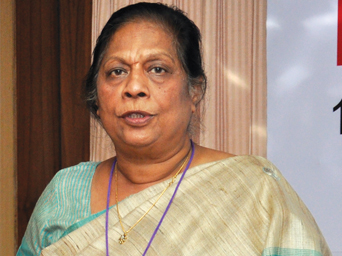
Dr Aruna Srivastava is explaining the role of GIS in mapping malaria hotspots
 Dr Aruna Srivastava, Consultant, National Institute of Malaria Research, Indian Council of Medical Research, Ministry of Health & Family Welfare
Dr Aruna Srivastava, Consultant, National Institute of Malaria Research, Indian Council of Medical Research, Ministry of Health & Family Welfare

In India, the number of malaria cases came down from 6.47 million in 1976 to around 2.5 to 3 million cases annually by 1996. After 1996, there was a declining trend in malaria incidence and in 2003 we had about 1.87 million cases. In India, tribal population contributes about 30 percent of total malaria cases. Largest concentration of tribal population, about 15.4 million, is in Madhya Pradesh, which is about 20.3 percent of the states total population. Due to the different linguistic, cultural and geographical environment, and its peculiar complications, the tribal world of Madhya Pradesh has been largely cut-off from development and this is a cause for concern for the government.
Presently malaria shows a declining trend, whereas Plasmodium falciparum cases show an uptrend. In central India, specifically, Madhya Pradesh, control of malaria is logistically difficult and outbreaks are frequently recorded. Reasons for this being inadequate surveillance, poor reporting, a time lag in reporting to decision makers and a lack of geo referenced information to pinpoint the trouble spots for a timely and preventive action.
Our team from Indias National Institute of Malaria Research have worked extensively with colleagues from the National Vector Borne Disease Control Programme and the State Health Department to use GIS to pinpoint trouble spots for timely preventive action.

An information management system based on GIS using district and block wise malaria data, has been constructed for Madhya Pradesh for quick retri of info and dynamic generation of maps to highlight hotspots of malaria for formulating prompt and focused malaria control strategy. Out of total 48 districts consisting of 313 blocks, based on certain criteria, GIS identified 58 blocks falling in 25 districts as hotspots. Malaria flares up from these pockets whenever favourable conditions for transmission occur. It was suggested to National Vector Borne Disease Control Programme (NVBDCP) that focused malaria control in these hot pockets may be taken up on priority during the year 2007; it was implemented by State Health Authorities, M P under the directive of NVBDCP. Implementation of control measures were uated by NVBDCP.
GIS based malaria surveillance system was implemented in Dindigul municipality on November 19th 1999, The World GIS Day. Health officers from the district and state head quarters Tamil Nadu were trained for its proper utilisation. GIS mapping would make it easy to update information instantly and to identify the trouble spots at the village level within the district which is the lowest unit equipped with computer facilities and the information can reach instantly to state and the policy makers to formulate focused and cost effective malaria control strategy. This is the first time when GIS has been used in national control programme for tribal malaria.
Be a part of Elets Collaborative Initiatives. Join Us for Upcoming Events and explore business opportunities. Like us on Facebook , connect with us on LinkedIn and follow us on Twitter , Instagram.












